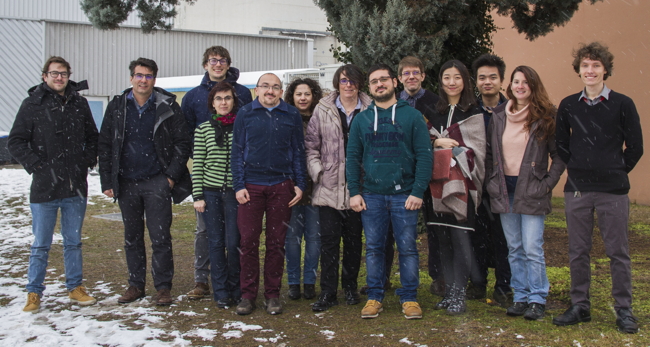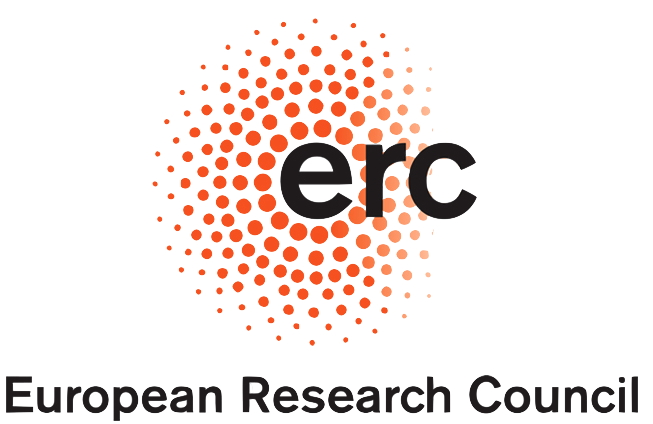Solar Fuels, Hydrogen and Catalysis
Welcome to the SolHyCat team
Published on 16 June 2023
Body text 1
 Leader
Leader
|
Dr.Vincent Artero
CEA research director
Laboratoire Chimie et Biologie des Métaux
CEA-Grenoble
17 avenue des Martyrs
38 054 Grenoble cedex 09
Phone: (33) 4 38 78 91 06
Fax: (33) 4 38 78 91 24
|
 The team
The team

 Hydrogenases and Biocatalysis
Hydrogenases and Biocatalysis

 Chemical mimicks
Chemical mimicks

 Cobalt-based catalysts
Cobalt-based catalysts

 Grafting Catalysts for Hydrogen production/uptake on nanostructured electrodes
Grafting Catalysts for Hydrogen production/uptake on nanostructured electrodes

 Bio-inspired and electrodeposited solid-state catalytic materials
Bio-inspired and electrodeposited solid-state catalytic materials

 Artificial enzymes
Artificial enzymes
 Artificial photosynthesis
Artificial photosynthesis

 Homogeneous light-driven systems
Homogeneous light-driven systems

 Metal-oxide based photoelectrode materials for water splitting
Metal-oxide based photoelectrode materials for water splitting

 Towards H2-evolving photoelectrode materials
Towards H2-evolving photoelectrode materials
 ArtipHyction, a collaborative FCH-JU-funded project
ArtipHyction, a collaborative FCH-JU-funded project
 The ERC-granted PhotoCatH2ode project
The ERC-granted PhotoCatH2ode project
 CO2 valorization and fuel production
CO2 valorization and fuel production
 Artificial photosynthesis
Artificial photosynthesis

 Towards H2-evolving photoelectrode materialsOur group is now engaged in several projects aiming at developing new photocathode materials for H2 evolution and their integration into a fully operative Photo-Electro-Chemical (PEC) cell. Both solid-state and fully molecular-immobilized systems are targeted. In addition hydrid systems combining a molecular catalysts and solid-state semi-conductors are developed in collaboration with Dr. Phong D. Tran and Prof. Jim Barber from the Solar Fuel Lab of Nanyang Technological University in Singapore.
Towards H2-evolving photoelectrode materialsOur group is now engaged in several projects aiming at developing new photocathode materials for H2 evolution and their integration into a fully operative Photo-Electro-Chemical (PEC) cell. Both solid-state and fully molecular-immobilized systems are targeted. In addition hydrid systems combining a molecular catalysts and solid-state semi-conductors are developed in collaboration with Dr. Phong D. Tran and Prof. Jim Barber from the Solar Fuel Lab of Nanyang Technological University in Singapore.
 ArtipHyction, a collaborative FCH-JU-funded project
ArtipHyction, a collaborative FCH-JU-funded project Building on the pioneering work performed in a precedent project based on natural enzymes (Solhydromics, FP7-Energy-2008-FET) and the convergence of the work of the physics, materials scientists, chemical engineers and chemists involved in the project, an artificial device will be developed to convert sun energy into H2 with close to 10% efficiency by water splitting at ambient temperature, including:
Building on the pioneering work performed in a precedent project based on natural enzymes (Solhydromics, FP7-Energy-2008-FET) and the convergence of the work of the physics, materials scientists, chemical engineers and chemists involved in the project, an artificial device will be developed to convert sun energy into H2 with close to 10% efficiency by water splitting at ambient temperature, including:
• an electrode exposed to sunlight carrying a PSII-like chemical mimic deposited upon a suitable transparent electron-conductive porous electrode material (e.g. ITO, FTO);
• a membrane enabling transport of protons via a pulsated thin water gap;
• an external wire for electron conduction between electrodes;
• a cathode carrying an hydrogenase-enzyme mimic over a porous electron-conducting support in order to recombine protons and electrons into pure molecular hydrogen at the opposite side of the membrane (our team is mainly involved in this last task). Web site of
ArtipHyction.
A tandem system of sensitizers will be developed at opposite sides of the membrane in order to capture light at different wavelengths so as to boost the electrons potential at the anode for water splitting purposes and to inject electrons at a sufficiently high potential for effective H2 evolution at the cathode. Along with this, the achievement of the highest transparency level of the membrane and the electrodes will be a clear focus of the R&D work. A proof of concept prototype will be assembled and tested by the end of the project.
 The ERC-granted PhotoCatH2ode projectGathering organic and hybrid photovoltaics with artificial photosynthesis for Photo-Electro-Chemical production of hydrogen.
The ERC-granted PhotoCatH2ode projectGathering organic and hybrid photovoltaics with artificial photosynthesis for Photo-Electro-Chemical production of hydrogen.
 The objective of this project is to design an operating photocathode based on Earth-abundant elements for photo-electro-chemical production of hydrogen answering therefore the sustainability and cost-effectiveness issues. The novelty relies on the approach gathering organic and hybrid photovoltaics with artificial photosynthesis to design original materials and architectures.
The objective of this project is to design an operating photocathode based on Earth-abundant elements for photo-electro-chemical production of hydrogen answering therefore the sustainability and cost-effectiveness issues. The novelty relies on the approach gathering organic and hybrid photovoltaics with artificial photosynthesis to design original materials and architectures.
More precisely, we will combine and immobilize molecular photosensitizers with bio-inspired catalysts on an electrode surface thanks to electronic junctions. This will allow
(i) optimizing the light-driven charge separation,
(ii) controlling the successive electron transfer steps from the electrode to the catalyst,
(iii) and limiting charge recombination processes.
Top page